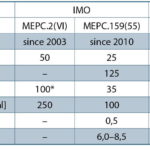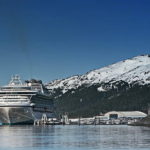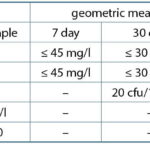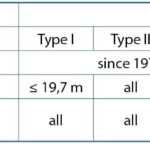As the seas are the largest ecosystems of the world, sewage has become strictly regulated. An overview of the different IMO and US standards is given
The oceans are of great economic importance as a food source and traffic carrier. As shipping transports 90 % of global[ds_preview] trade, reducing emissions originating from wastewater generated during ship operation can make an important contribution to protect the marine environment. By reason of the transboundary nature of the marine environment, a good marine environmental status can only be achieved at an international level.
Changes to international regulations have caused incertitude towards the relation of international and US regulations. A clear understanding of the regulations concerning sewage is, thus, necessary. Different regulations affect different types of vessels, from small private vessels with one installed toilet up to large cruise ships. Furthermore, shipping routes are becoming more important because of the increasing number of special areas with more stringent regulations on the discharge of sewage from ships.
Besides the Alaskan Waters as a special area under US regulation, the International Maritime Organization (IMO) adopted the occasion to designate special areas in July 2011. The Baltic Sea will be one of the first special areas.
International activities to protect the sea
At an international level the IMO, a specialized agency of the United Nations (UN), was established in Geneva in 1948 and came into force in 1959. The original mandate was principally concerned with maritime safety and the prevention of pollution of the sea by oil. In 1973 the IMO convened the »International Convention for the Prevention of Pollution from Ships« (MARPOL 73), which was revised in 1978 (MARPOL 73/78) and became effective five years later.
Besides the prevention of pollution by oil, the MARPOL convention also contains other pollution such as noxious and harmful substances in bulk, garbage, exhaust emissions and sewage. The regulations concerning sewage are found in MARPOL Annex IV. The second resolution of the sixth session of the Marine Environment Protection Committee (MEPC) provided the first international effluent standards and guidelines for performance tests for sewage treatment plants: MEPC.2(VI). Although it was adopted in 1976, it took 27 years for ratification. Finally, in 2003 the resolution entered into force. Developments in the design and effectiveness of sewage treatment plants resulted in a revision of the guideline in order to improve the protection of the marine environment. The revised guidelines MEPC.159(55) adopted in 2006 provide more stringent effluent standards and apply for equipment installed on board on or after 1 January 2010 (Table 1).
MARPOL Annex IV has been currently ratified by 129 member states, which represent 86.69 % of the world tonnage. The United States is not party to MARPOL Annex IV. The applicable national regulation in the United States is 33 CFR Part 159. Until such time as the revised guidelines MEPC.159(55) entered into force in 2010, the requirements for marine sanitation devices (MSD) and sewage treatment plants were regarded as equal. The elimination of the prior equivalency has created uncertainty for US-registered vessels engaged in international voyages.
Table 2 gives an overview about the applicability of the different IMO and US standards.
What document is needed on voyage?
As a result, different regulations apply subject to whether the vessel is US-flagged or non-US-flagged and the type of voyage. The following cases have to be considered:
• Non-US-flagged vessel
– on an international voyage
– on a US voyage
• US-flagged vessel
– on an US voyage
– on an international voyage
Non-US-flagged vessel on an
international voyage
MARPOL Annex IV states that an International Sewage Pollution Prevention Certificate (ISPPC) shall be issued »(…) to any ship which is engaged in voyages to ports or offshore terminals under the jurisdiction of other Parties to the Convention«.
Non-US-flagged vessel on a US voyage
A valid ISPPC will be accepted by the US Coast Guard (USCG) as proof of being in compliance with US regulations.
US-flagged vessel on a US voyage
A certificate of approval issued by the USCG states the compliance with the specific standards and regulations in 33 CFR Part 159.
US-flagged vessel on an
international voyage
An ISPPC can only be issued to a ship which is entitled to fly the flag of a state which is a party of MARPOL Annex IV. As replacement for the ISPPC, the US issue
a Statement of Voluntary Compliance (SOVC) for US vessels that engage in international voyages to demonstrate voluntary compliance with MARPOL Annex IV. This means that the marine sanitation device has to comply with the standards and regulations in 33 CFR Part 159 and with more stringent effluent standards in MEPC.159(55). The SOVC takes the place of the ISPPC.
The Navigation and Vessel Inspection Circular No. 1-09, issued by the US Coast Guard on 23 June 2009, gives guidance in requesting USCG certification of compliance with international sewage regulations in MARPOL Annex IV.
US sewage regulations
Every vessel that is equipped with installed toilets and operating on US navigable waters is required to have a USCG-certified MSD installed on board. The US Coast Guard categorizes marine sanitation devices into three different types, depending on whether the equipment treats or holds sewage and what the produced effluent quality is (Table 3). The applicable effluent standards are shown in Table 1.
Special area Alaskan waters
In the year 2000 the US Congress established separate requirements for the discharge from cruise ships with a capacity for 500 or more passengers and operating in certain Alaskan waters. It prescribes regulations for the discharge of sewage and graywater, sampling and testing of discharges, reporting and record keeping.
Discharge into the applicable waters of Alaska is prohibited unless the cruise vessel has a Type II MSD installed that treats sewage and graywater, is not less than one nautical mile from the nearest land and moving at a minimum of 6 kn.
In addition, advance notification has to be made to the appropriate Captain of the Port (COTP) 90 days prior to each initial entry into the applicable waters of Alaska. Certification of participation under a quality assurance / quality control plan (QA/QCP) for sampling and analysis has to be provided and must contain information about:
• sampling techniques,
• laboratory test methods,
• laboratory quality assurance procedures,
• data validation.
The collection and analysis of the samples must be done by an independent USCG-accepted laboratory and can be carried out worldwide.
Within a minimum of 30 days and a maximum of 120 days prior to each initial entry, a certification has to be provided which shows that the effluent meets the standards for USCG Type II MSDs in Table 1. Within 30 days of each initial entry, a Vessel Specific Sampling Plan (VSSP) containing information about ship particulars such as
• passenger and crew capacity,
• daily water use,
• holding tank capacity,
• discharge and sampling ports,
• sample and discharge documentation
has to be provided to the COTP for review and acceptance. The COTP directs sampling and testing for conventional and priority pollutants.
Continuous discharge
For continuous discharge the effluent has to satisfy more stringent standards and includes several maximum means on different time periods. The minimum level of effluent quality is shown in Table 4.
Not less than 30 days prior to a planned discharge, notification must be made to the COTP including certification showing compliance with the specified standards from at least five samples taken on different days over a 30-day period. Demonstration of continuous compliance is required through periodical testing. Additional random sampling events can be directed by the COTP.
Special area Baltic Sea
With the resolution MEPC.200(62) several amendments to MARPOL Annex IV were adopted in July 2011. These amendments establish special areas, designate the Baltic Sea as the first special area under MARPOL Annex IV and revise the guidelines for the discharge of treated sewage effluent into the sea MEPC.159(55). The revision is expected to be adopted in October 2012 and will be effective for new passenger ships in the year 2016 and for existing passenger ships in 2018.
Within special areas passenger ships carrying more than twelve passengers (without crew members) shall either discharge to port reception facilities or comply with more stringent effluent discharge standards. Extended discharge standards are introduced with the goal to reduce nitrogen and phosphorous input into sea areas with eutrophication problems. An agreement on discharge standards for nitrogen and phosphorus is expected shortly. Proposals from different member states for the total nitrogen content in the effluent range from 20–30 mg / l or a reduction of 30–70 % at the very least. For total phosphorous content the proposed limits range from 1–2 mg / l or a reduction of 70–80 % at the very least.
Compliance with these stringent effluent standards requires the implementation of advanced sewage treatment systems onboard ships, and the size of these systems will increase significantly. The development of overall plans for sewage and waste management on ships will be a future challenge.
Dr. Elmar Dorgeloh, Dr. Martina Defrain, Markus Joswig
























